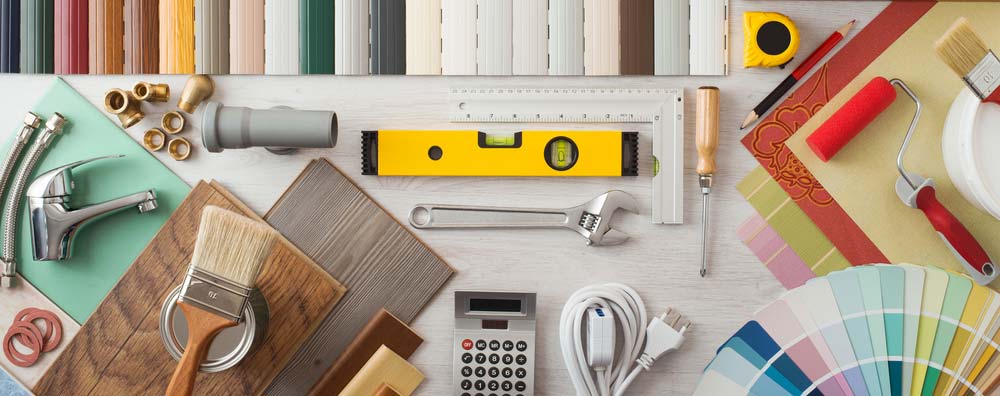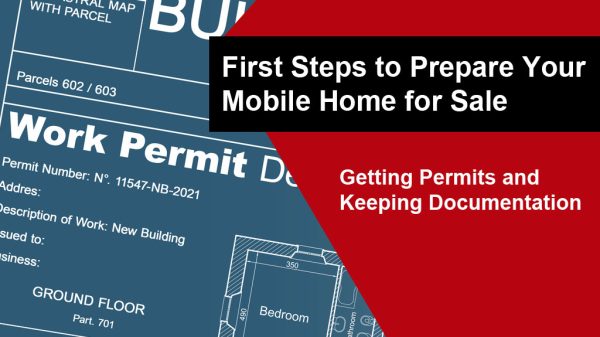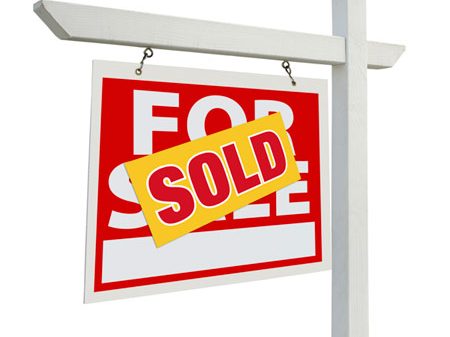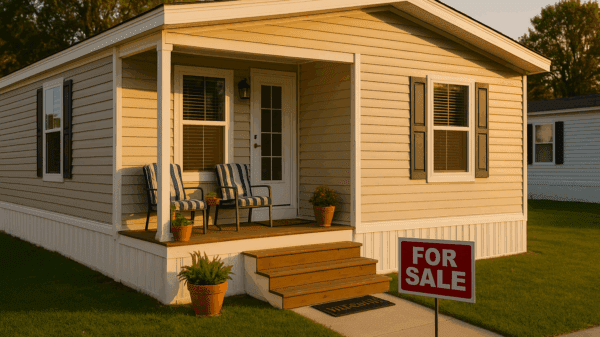Table of Contents
Preparing Your Mobile Home for Sale: A Comprehensive Guide to Budgeting for Repairs
When it comes to selling your mobile home, one of the most important steps is preparing it to be in the best possible condition. Setting a realistic budget for repairs is crucial to achieving this goal, as it helps you allocate resources efficiently and focus on upgrades that will have the greatest impact on your home’s appeal and overall value.
Careful budgeting allows you to prioritize repairs, avoid unexpected costs, and maximize the return on your investment. To help you navigate this process and sell your mobile home quickly, here’s an in-depth guide on how to budget for mobile home repairs effectively.
Step 1: Assessing Repair Needs
Before you can establish a realistic budget, it’s essential to conduct a comprehensive assessment of your mobile home to identify the repairs that are necessary. Start by walking through each room and examining every part of the house, both inside and outside. Pay close attention to:
- Structural elements: Look for cracks in the walls, damaged or uneven flooring, warped siding, or problems with the roof.
- Plumbing systems: Check for leaks under sinks, around toilets, or near water heaters. Make sure faucets and drains are working properly, and water pressure is sufficient.
- Electrical systems: Ensure that all outlets, switches, and lighting fixtures are in working order. Test the electrical panel to verify it’s in good condition.
- Appliances: Make sure major appliances like the refrigerator, stove, washer, and dryer are in good working condition. If any are malfunctioning, you may need to repair or replace them.
- Flooring: Look for signs of wear and tear on carpets, tiles, or hardwood floors. Any flooring issues, like sagging or squeaking, should be addressed immediately.
Once you’ve thoroughly inspected your mobile home, categorize the repairs into two main groups: critical repairs and cosmetic repairs.
- Critical repairs include anything that affects the safety, functionality, or structural integrity of the home. For example, fixing a leaking roof, faulty wiring, or plumbing issues should be top priorities.
- Cosmetic repairs improve the home’s aesthetic appeal and may include painting, replacing outdated fixtures, or making small upgrades that make the property more attractive to potential buyers.
Having a well-defined list of repair needs is the first step toward creating an effective budget.
Step 2: Researching Repair Costs
After identifying the repairs that need to be made, the next step is to research the costs associated with each one. Start by reaching out to local contractors, plumbers, electricians, and other professionals to obtain quotes for the work required.
It’s important to get multiple estimates for larger jobs to ensure you’re getting the best value. For example, if you need to repair your HVAC system or replace the roof, contact at least three different contractors to compare pricing and services.
Additionally, factor in the cost of materials, as well as any permits that may be required. For certain repairs, especially structural or electrical work, you may need to obtain permits from local authorities. Permit costs vary depending on your location and the scope of the project, so make sure to include this in your budget.
Remember that smaller repairs and updates, like repainting, changing hardware, or installing new light fixtures, may not require professional assistance, but you’ll still need to account for the cost of supplies.
By thoroughly researching repair costs, you can create a more accurate budget and avoid underestimating your expenses.
Step 3: Prioritizing Repairs
Once you’ve obtained quotes and estimated the costs of materials, prioritize the repairs based on their urgency and the impact they will have on potential buyers.
- Critical repairs should always come first, especially if they affect the safety or functionality of the home. For example, fixing electrical issues, repairing leaks, or addressing structural problems should be at the top of your list.
- After the critical repairs have been addressed, you can move on to cosmetic improvements that will enhance the visual appeal of the property. While cosmetic upgrades may not be essential, they can help set your home apart from others on the market. For example, updating old cabinetry, replacing worn-out flooring, or adding a fresh coat of paint can significantly improve the home’s presentation and make it more inviting to potential buyers.
Prioritizing repairs allows you to allocate your budget efficiently, ensuring that the most important issues are addressed before moving on to cosmetic enhancements.
Step 4: Allotting Contingency Funds
When budgeting for repairs, it’s essential to set aside contingency funds for unexpected expenses. Renovation projects often encounter unforeseen challenges or hidden issues that require additional work, especially in older homes. For example, while fixing a leaking pipe, you might discover water damage to the surrounding walls or floors that need to be repaired as well.
To account for these potential surprises, aim to allocate 10% to 20% of your total repair budget for contingencies. This buffer will provide you with a financial safety net, allowing you to handle any unexpected costs without derailing your entire budget.
Step 5: DIY vs. Professional Repairs
Another key factor to consider when budgeting for repairs is whether you can handle some of the work yourself or if it’s best to hire professionals. DIY repairs can be a cost-effective way to address minor issues, especially if you have the skills and tools to complete the job. Tasks like painting, minor carpentry, or replacing fixtures can often be done by the homeowner, saving on labor costs.

However, it’s important to recognize your limitations. Complex repairs, such as electrical work, plumbing, or structural changes, should always be handled by licensed professionals. Attempting these repairs without the proper expertise could result in unsafe conditions or costly mistakes, which may even reduce the value of your home.
By distinguishing between tasks you can do yourself and those that require professional assistance, you can avoid unnecessary expenses and ensure that all repairs are done correctly.
Step 6: Cost-Effective Upgrades
As you budget for repairs, consider incorporating cost-effective upgrades that can significantly improve your mobile home’s appeal without breaking the bank. Here are some ideas to consider:
- Repainting the interior: A fresh coat of paint can dramatically transform a space, making it feel newer and more modern. Stick to neutral colors that appeal to a broad range of buyers.
- Updating light fixtures: Replacing outdated or damaged light fixtures with more modern designs can instantly refresh the look of your home.
- Swapping out cabinet hardware: Simply replacing old cabinet handles or knobs with more stylish, contemporary options can give your kitchen and bathrooms an updated appearance without the need for a full remodel.
- Improving curb appeal: Simple landscaping tasks like trimming hedges, mowing the lawn, or adding a few potted plants can greatly enhance the exterior of your home and make a positive first impression on buyers.
These small upgrades may not be expensive, but they can have a big impact on the overall appeal of your home.
Step 7: Researching Financing Options
If your repair budget exceeds your immediate financial capacity, it’s worth researching financing options to help cover the costs. Some homeowners opt for personal loans or lines of credit to fund their repairs, while others may explore home equity loans if they have built up enough equity in the property.
Before taking on any financing, make sure to evaluate the terms and conditions carefully, ensuring that the interest rates and repayment terms align with your financial situation. It’s also important to consider how the additional debt may affect your financial stability, particularly if you’re counting on the proceeds from the sale of your home to pay off the loan.
Step 8: Obtaining Multiple Quotes
To make the most of your repair budget, always obtain multiple quotes from different contractors or service providers. By comparing quotes, you can find competitive pricing, ensuring that you’re getting the best value for the quality of work offered.
When comparing quotes, don’t just focus on the price. Take into account factors such as the contractor’s reputation, experience, and the scope of work included in the estimate. Sometimes the lowest price may not provide the best quality, so it’s important to weigh all factors when making your decision.
Step 9: Incorporating Sustainable Choices
Lastly, consider incorporating sustainable choices during the repair process. Energy-efficient upgrades, such as installing LED lighting, low-flow faucets, or energy-efficient appliances, can appeal to environmentally-conscious buyers and may offer long-term savings on utility bills.
Sustainable upgrades not only make your home more appealing to a growing segment of eco-conscious buyers but may also enhance the value of your property in the long run.
Final Thoughts
Budgeting for repairs is an essential aspect of preparing your mobile home for sale. By carefully assessing repair needs, researching costs, and prioritizing critical issues, you can allocate resources effectively to make the most impactful improvements. Remember to set aside contingency funds for unexpected expenses and explore cost-effective upgrades to maximize your budget’s potential.
While DIY repairs can help reduce costs, don’t hesitate to hire professionals for more complex jobs to ensure safety and code compliance. Finally, sustainable choices and multiple quotes can further improve your home’s value and appeal, helping you attract potential buyers and achieve a successful sale.
With thoughtful planning and budgeting, you can prepare your mobile home to stand out in the market and sell quickly at a price that reflects its true value.
Additional Resources for Preparing Your Mobile Home for Sale
For more detailed guidance on budgeting for repairs and selling your mobile home, check out the following resources:
- National Association of Realtors (NAR) – Home Selling Resources: A comprehensive resource on home selling, offering tips on repairs, budgeting, and preparing any type of home for sale.
- HomeAdvisor – Cost Guides: A helpful tool for researching the typical costs of various home repairs, from plumbing to electrical work, ensuring you budget accurately for your mobile home repairs.

 Having a well-defined list of repair needs is the first step toward creating an effective budget.
Having a well-defined list of repair needs is the first step toward creating an effective budget.






